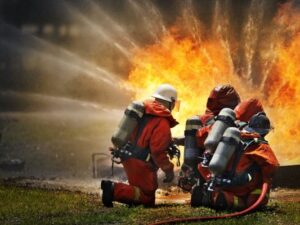- Description
- Curriculum
- Reviews
This Basic HACCP (Hazard Analysis and Critical Control Points) Awareness Training is designed to provide participants with a fundamental understanding of food safety principles and the HACCP system. The course aims to equip individuals with the knowledge to recognize food safety hazards and understand their role in maintaining food safety.
Target Audience
-
Food handlers and production workers.
-
Frontline staff involved in food preparation, storage, or distribution.
-
Individuals new to food safety practices.
Learning Objectives
By the end of this course, participants will:
-
Understand the importance of food safety and its impact on public health.
-
Identify common types of food safety hazards (biological, chemical, and physical).
-
Learn the basic principles of HACCP and how they apply to food handling.
-
Recognize the importance of personal hygiene and good manufacturing practices (GMPs).
-
Understand their role in maintaining food safety and preventing contamination.
-
1Definition of HACCP
What it is, why it is important.
-
2History and Development of HACCP
The Hazard Analysis and Critical Control Points (HACCP) system was developed in the 1960s as a response to the need for ensuring the safety of food consumed by astronauts during space missions. The history of HACCP is rooted in the work of NASA (National Aeronautics and Space Administration) and its collaboration with food safety experts, which led to the creation of a scientifically grounded approach to food safety.
-
3HACCP’s Role in Ensuring Food Safety
HACCP (Hazard Analysis and Critical Control Points) plays a critical role in ensuring food safety by systematically identifying and managing potential hazards throughout the entire food production process.
-
4Legal Framework
The Hazard Analysis and Critical Control Points (HACCP) system has become a globally recognized and required standard for food safety in both the public and private sectors.
-
5Conducting a Hazard Analysis
The first and most critical step in the HACCP process is conducting a hazard analysis. A hazard analysis involves identifying any potential biological, chemical, or physical hazards that could affect the safety of the food during production, processing, and handling. This process is essential for establishing an effective food safety management system and developing control measures to mitigate risks.
-
6Determine Critical Control Points (CCPs)
After conducting a hazard analysis and identifying potential hazards in the food production process, the next step in the HACCP system is to determine Critical Control Points (CCPs).
-
7Establish Critical Limits
Once you’ve identified the Critical Control Points (CCPs) in your HACCP system, the next crucial step is to establish critical limits for each CCP.
-
8Establish Monitoring Procedures
Once Critical Control Points (CCPs) and their critical limits have been established in the HACCP system, the next crucial step is to establish monitoring procedures.
-
9Establish Corrective Actions
Once monitoring procedures are in place and critical limits have been set for each Critical Control Point (CCP) in the HACCP system, it's crucial to establish a clear plan for corrective actions when deviations occur.
-
10Verification Procedures: Ensure the HACCP System Works
Verification is a critical component of the HACCP (Hazard Analysis and Critical Control Points) system.
-
11Documentation and Record Keeping
Documentation and Record Keeping: Importance of Records for Compliance in HACCP
-
14What Makes a Critical Control Point (CCP) Critical
A Critical Control Point (CCP) in food production is a point, step, or procedure in the process where control can be applied to prevent, eliminate, or reduce a food safety hazard to an acceptable level. A CCP is essential because if it is not properly controlled, it could result in a significant food safety risk, such as contamination, spoilage, or illness.
-
15Application of HACCP and Critical Control Points (CCPs)
HACCP (Hazard Analysis Critical Control Point) is a food safety management system used to identify, evaluate, and control food safety hazards in food production.
-
16Tools for Monitoring in Food Safety
Effective monitoring is essential to ensure that critical control points (CCPs) in food production are under control and that food products meet safety standards.
-
17Setting Up Control Systems in Food Safety
Setting up effective control systems is essential for monitoring and managing food safety risks, particularly when implementing HACCP (Hazard Analysis Critical Control Point) principles. These systems ensure that food production processes are operating within safe parameters, and help organizations maintain compliance with food safety regulations. Critical to these control systems are record keeping, logs, and the frequency of monitoring activities.
-
18Case Study: Monitoring Procedures in Action in a Food Production Facility
Case study on monitoring procedures in action in a food production facility
-
19Corrective Actions When Critical Control Points (CCPs) Are Not Met
In food safety systems, particularly under the HACCP (Hazard Analysis Critical Control Point) framework, CCPs (Critical Control Points) are stages in food production where a loss of control could lead to a food safety hazard.
-
20Documentation and Reporting in HACCP
Documentation and Reporting in HACCP: Proper Recording Methods, Reporting Non-Conformities, and Traceability
-
21Case Study
Case Study: Corrective Action in a Food Production Facility
-
22Steps for Implementing HACCP
Implementing an effective HACCP (Hazard Analysis Critical Control Point) system involves a series of well-defined steps to ensure food safety throughout the production process.
-
23Review of Common Challenges in Implementing HACCP
Review of Common Challenges in Implementing HACCP: Resource Constraints and Employee Training








